LOFAR
Low-Frequency Array
Horizon – Before the Big Bang
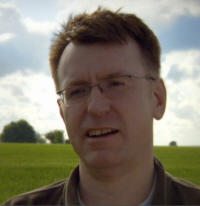
Professor Bob Nichol
In rural England, there is a project under way that could seriously undermine inflation, the mainstay of the current cosmology.
Bob Nichol “What we’re doing today is building part of the world’s biggest radio telescope. Which will allow us to look back to about a billion years
after the big bang. So we’ll get a glimpse of the universe in its adolescent years.”
Professor Bob Nichol is part of a team of academics constructing a new generation of radio telescope. It’s called the low-frequency array –LOFAR. And
though it lacks the iconic beauty of the 25 m dish whose site it shares… its scientific ambition more than makes up for the aesthetic
disappointment.
Bob Nichol “One of the foundations of cosmology is inflation. And one of the great things about inflation is that it says on the largest scales in the
universe, the universe should be random, and the galaxies and the matter should be distributed randomly. So what we can do with this telescope is
check that. And if we don’t see it, if it’s not random, then that’s going to set the cat amongst the pigeons, and someone’s going to have to come up
with a better idea for what could have caused that non-randomness in the universe.”
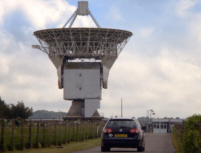
Radio Telescope
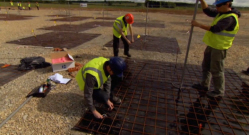
Low-Frequancy Array
If LOFAR removes inflation, the whole of the standard model of cosmology would be called into question. But if it confirms inflation, it will
not only support the standard model, it will leave most of the competing theories intact as well.
To settle those arguments, the ambition is nothing less than to observe the big bang itself.
Of course, we’re 13.7 billion years too late to witness the actual event. But in a quiet corner of Louisiana, they are looking for the next
best thing. They’re hunting for a gravity waves.
But gravity waves are such slight and shy beasts that finding them has not been easy, even in the relative peace of rural Louisiana. This is
LIGO, the Laser Interferometer Gravitational Wave Observatory… Where Joe Giaimi is sniffing out the reluctant gravity waves with laser beams
and mirrors.
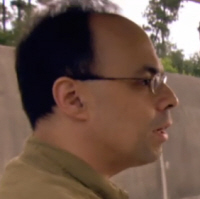
Joe Giaimi
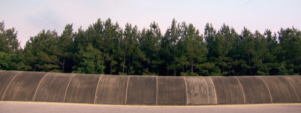
Concrete Enclosure
Joe Giaimi “This concrete enclosure protects the stainless steel vacuum tube that encloses our beam, and it goes on for the next 4 kilometres.”
“How come it has to be so long?”
Joe Giaimi “Well, the way gravitational waves work, the longer the distance you measure, the larger the change in length that you see. And 4 km
was chosen because we could afford it, and we could find a plot of land that big.”
A gravity wave is thought to be produced when cataclysmic events take place, like the big bang. The gravity waves that are theoretically
produced by such an event are thought to warp the very fabric of space and time. And it’s this warping that Joe is hoping to measure with LIGO.
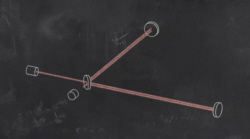
LIGO
LIGO generates a laser beam which is split into two and then reflected off mirrors at the end of each 4 km tunnel. When the beams arrive back
at the start of their journey, they should still be in sync with each other. If they’re not, it might be that a gravity wave has temporarily
changed the relative lengths of LIGO’s arms. A bit.
Joe Giaimi “The difference between those two lengths, we’re sensitive to that by less than 10 in the -18 m. So if this arm length were to change
with respect to that arm length bigger than that, bigger than 10 in the -18 m, we could see it.”
“And what does that equate to?”
Joe Giaimi “10 in the -18 m is 1/1,000 the diameter of a proton, or 1/1,000 the diameter of the smallest atomic nucleus, the nucleus of a
hydrogen atom.”
“And you can measure that?”
Joe Giaimi “Yes.”
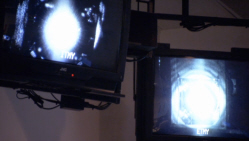
Monitor Screens
24 hours a day, seven days a week, a patient band of physicists watch over the signal in shifts.
Joe Giaimi “So, while we’re taking data, we always have two people in the control room.”
With tolerances so fine, measurement can be affected by almost anything that moves on earth. Freight trains passing 5 miles away… means that
operations cease.
Though the technology is in its infancy, its potential is huge. LIGO is, in short, a prototype big bang detector. And once the concept is
proved on earth, another interferometer will be built in space, where arms 3 million miles long will intercept the remains of the gravity
waves theoretically produced at the beginning of time.
And it could go even further. It could be that hidden in the signature of that first wave is contained evidence of previous big
bangs. Good news perhaps for Param Singh and Roger Penrose when the satellites eventually fly.






